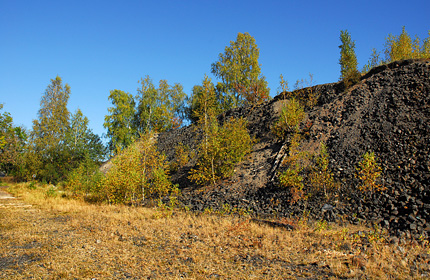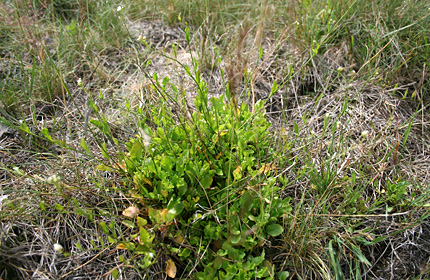Natural variation, underlying molecular basis and ecological role of metal hyperaccumulation in Arabidopsis halleri.
Projectcode: KR 1967/10-1

Heavy-metal contaminated site in Czech Republic. Arabidopsis halleri individuals can be found around the disturbed area.
Plant metal hyperaccumulation is a complex and extreme trait displayed by a few families and plant species. Hyperaccumulator plants are capable of accumulating extraordinary high concentrations of Zn, Ni, Cd, Co, Cu, Tl, among other metals into their leaves and aerial parts. This trait is especially overrepresented in the Brassicacea family, with several species showing hyperaccumulation and hypertolerance of heavy metals. Arabidopsis halleri, a perennial, stoloniferous plant, close relative to Arabidopsis thaliana, is one of them. This species can hyperaccumulate Zn and Cd, and is able to colonize metalliferous and highly disturbed areas. In order to access the natural variability and the ecological role of metal hyperaccumulation, we sampled individuals from 85 sites, distributed in 8 different countries (Germany, Belgium, France, Austria, Italy, Czech Republic, Poland and Switzerland), both in non-contaminated and contaminated areas. Overall, all plants were able to accumulate high Zn concentrations (from 580 to 39,519 mg kg-1 DW) in their leaves, while the Cd accumulation followed a much different pattern (with values ranging from 0.26 to 3,600 mg kg-1 DW), showing a non-constitutive behavior. No correlation between Cd and Zn leaf concentrations was found, suggesting different uptake mechanisms are taking place. Also, no correlation between soil Cd concentrations and Cd leaf concentrations could be found. To shed light onto the mechanisms underlying the ecological and genetic roles of metal hyperaccumulation in A. halleri, approaches aiming to analyze the defense hypotheses, with feeding experiments and the quantification of glucosinolates (metabolites involved in response to wounding and herbivory), along with laboratory phenotyping and sequencing-based marker analysis are taken place.

Arabidopsis halleri growing in a heavy-metal contaminated site in Germany (Harz Mountains)
Publications related to the project
- Deinlein U, Weber M, Schmidt H, Rensch S, Trampczynska A, Hansen TH, Husted S, Schjoerring JK, Talke IN, Krämer U, Clemens S. Elevated nicotianamine levels in Arabidopsis halleri roots play a key role in zinc hyperaccumulation. Plant Cell. 2012 Feb; 24(2):708-23.

- Hanikenne M, Talke IN, Haydon M, Lanz C, Nolte A, Motte P, Kroymann J, Weigel D, Krämer U (2008) Evolution of metal hyperaccumulation required cis-regulatory changes and copy number expansion of HMA4. Nature 453: 391-394

- Krämer U (2010) Metal hyperaccumulation in plants. Annu. Rev. Plant Biol., 61:517-34






